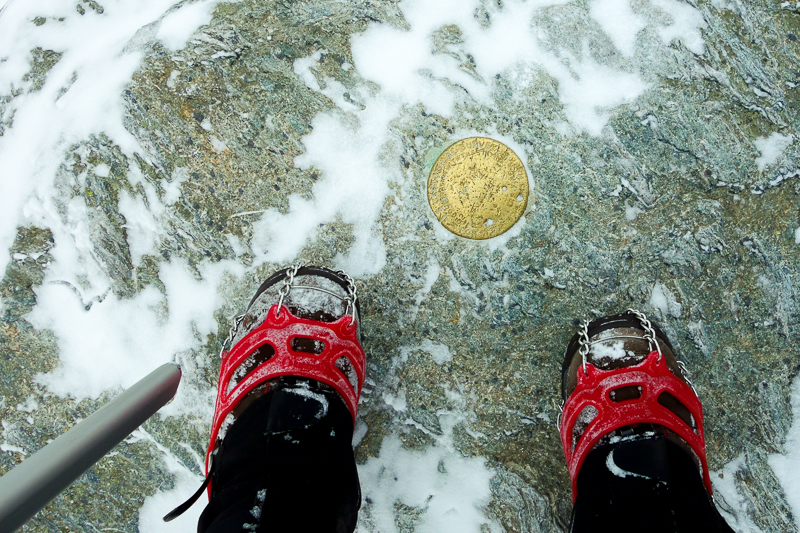 Vermont’s winter hiker has three options for foot travel across snow and ice, and slipping’s not one of them. When it comes to winter hiking traction and sticking safely to your surface, spike-less traction, spikes, and crampons will all get the job done in the right conditions, but which option is best?
Vermont’s winter hiker has three options for foot travel across snow and ice, and slipping’s not one of them. When it comes to winter hiking traction and sticking safely to your surface, spike-less traction, spikes, and crampons will all get the job done in the right conditions, but which option is best?
When Should I Use Winter Hiking Traction?
Traction footwear devices (spiked, spikeless, and crampons) are best when hiking in steep and icy conditions without a lot of fresh snow cover. They are also useful when there is a lot of ice hiding under fresh snow. If there is a significant amount of fresh snow, you should use snowshoes for ease of travel and to avoid post-holing. You should always have at least one form of appropriate traction in your pack on any winter hike. In many cases you will want to pack snowshoes as well in case snow depth increases as you climb.
Ok, so what are my options?
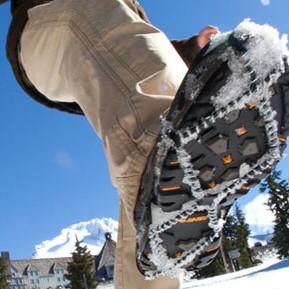 Spike-less Traction:
Spike-less Traction:
This design consists of a rubber strap system with steel coils underfoot. Examples are YakTrax’s Walk and Pro ($25 and $35, respectively). The Walk is designed for use on sidewalks or park trails, while the Pro is geared to more rugged trails. The Pro includes an additional strap over the arch to attach more securely to a hiker’s foot. Advantages of both models are low cost, light weight, easy storage in a pack or jacket pocket, and heel tabs that make suiting up easy and quick. On the downside, the coils often slip on hard slick surfaces and the Walk often falls off with vigorous use. Both are best suited to packed snow and are not recommended for steep, icy, or slippery surfaces, but are fine for neighborhood and dirt road walks.
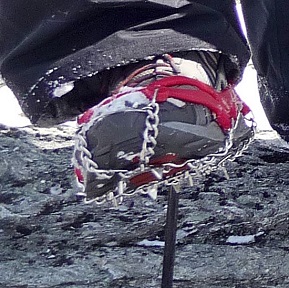 Spiked Traction:
Spiked Traction:
The most popular option amongst Vermont hikers, this style consists of a rubber strap system and small chains running underfoot with welded metal triangular spikes along the contact points between your foot and hiking surface. Examples are Hillsound FreeSteps6 Crampons ($65) and Kahtoola Microspikes ($75). Advantages are midrange cost, easy storage in pack or jacket pockets, light weight, heel tabs to aid putting on and taking off, and superior traction. These are best suited to powder and packed snow, hard-packed surfaces, and ice. They are more expensive than spike-less options, but provide significantly increased confidence.
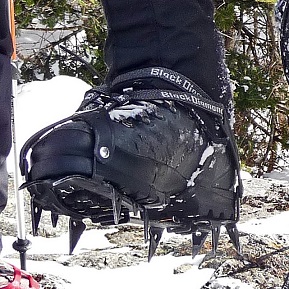 Crampons:
Crampons:
Crampons attach to your foot using one of three binding systems (step-in, strap, and hybrid designs). They attach to your boots, are made of metal, and have sharp teeth that dig into ice and packed snow. Examples of strap crampons are C.A.M.P USA Stalker Universal Crampons ($140) and Black Diamond Contact Crampons ($170). The advantage of this option is supreme traction. Disadvantages are higher price, heavier weight, greater complication, and bulky storage. Crampons are best suited to hard-packed surfaces and ice.
The right choice among these three comes down to intended use, budget, and personal preference. For winter hiking in the Green Mountains, the spiked models offer the best combination of affordability and security. Vermont’s winter hiker is likely to find fresh powder, packed snow, frozen streams, and icy and wind-blown summits. Spiked traction will keep you right-side-up in all of these conditions, without weighing you down or breaking the bank.
Winter Hiking Traction on a Budget
If you’re looking for a budget-friendly option or want to try equipment before committing to a purchase, renting may be the way to go. Vermonters can rent microspikes locally at Outdoor Gear Exchange in Burlington ($15/day) or REI in Williston (starting at $10 day for members, $15 for nonmembers). Lower Gear Outdoors (based in Arizona) offers to ship rentals anywhere in the U.S. – for a minimum of 3 days, $16 for microspikes and $49 for crampons (not including shipping).
The following stores offer snowshoe rentals and other winter gear: Umiak Outdoor Outfitters in Stowe, Clearwater Sports in Waitsfield, The Mountain Goat in Manchester, and First Stop Board Barn in Killington. Many local libraries also offer free snowshoe rentals, including the Fletcher Free Library in Burlington, the St. Albans Free Library, and Milton Public Library.
Regardless of your choice, always remove your traction before entering any lodges or shelters to protect their floors.
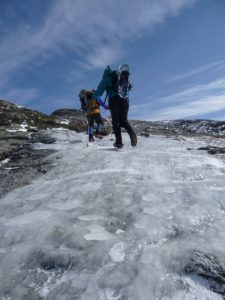
This article was written by Sarah Galbraith and previously appeared in the Winter 2013 Long Trail News. Products and prices have been updated as of December 2022. Sarah Galbraith of Marshfield, hikes, bikes, skis, and cartwheels through Vermont in all seasons. She thru-hiked the Long Trail in 2001.



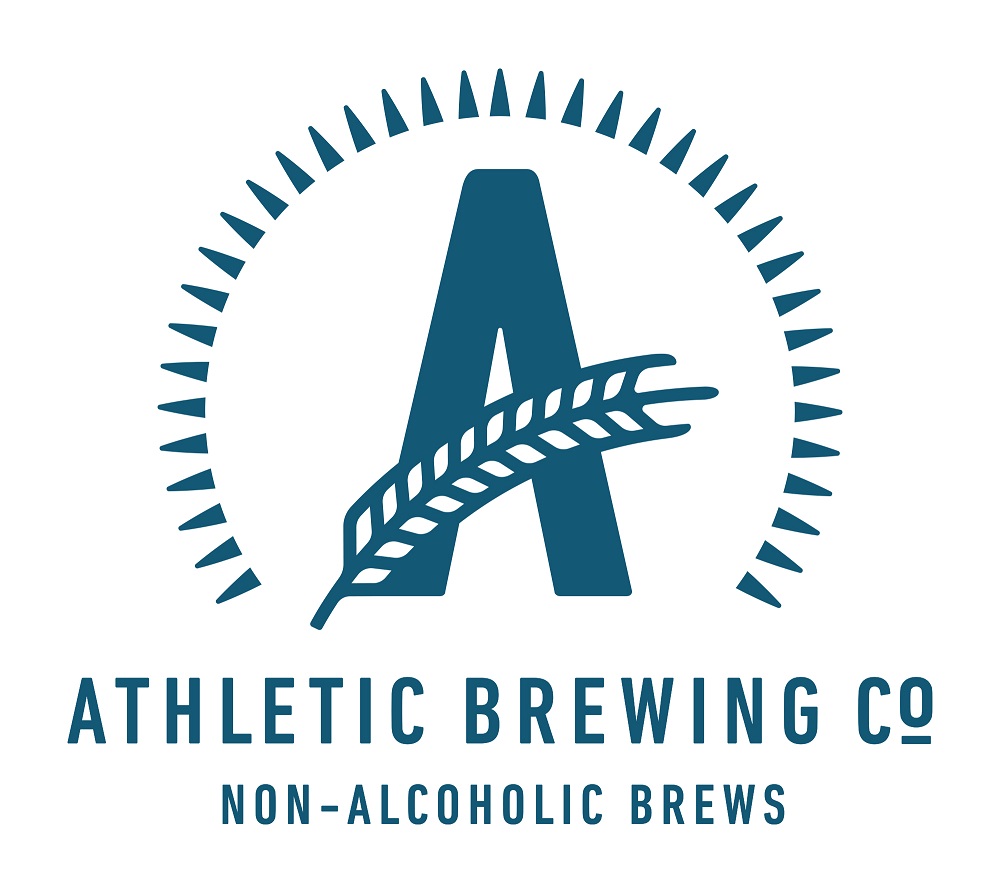















[…] Parts I and II blogs for information on gear to carry and conditions to watch out for. Traction is especially important this time of […]